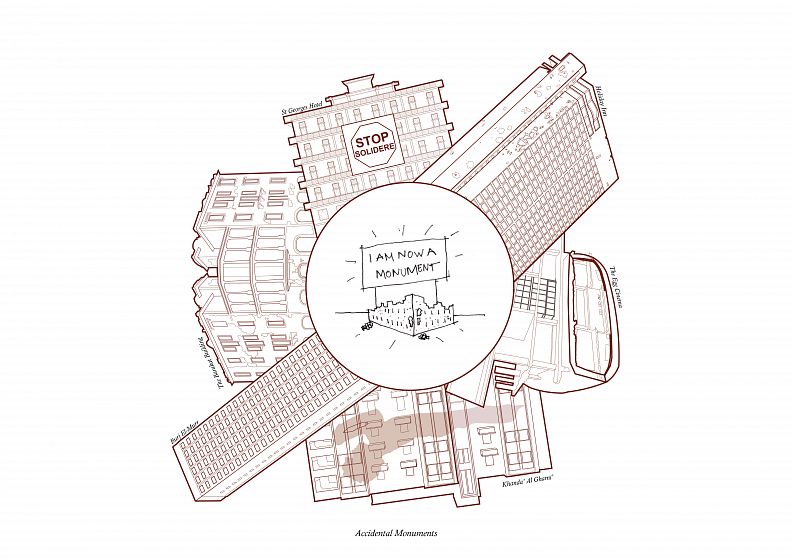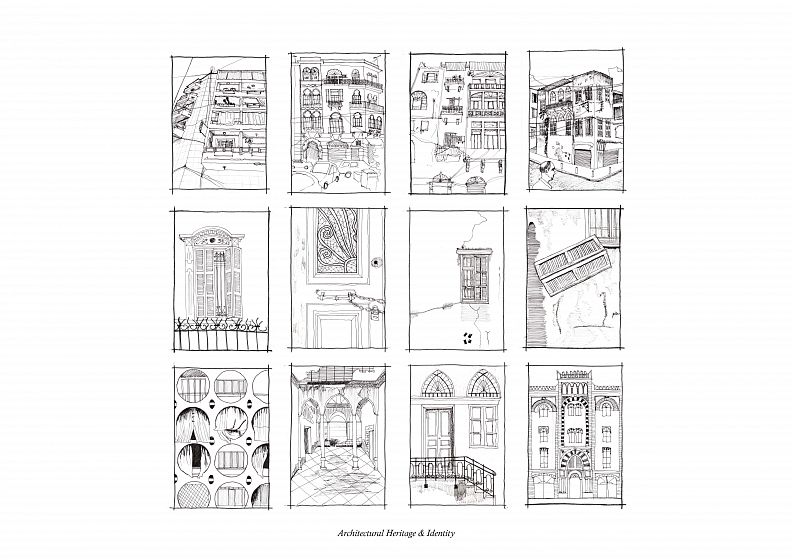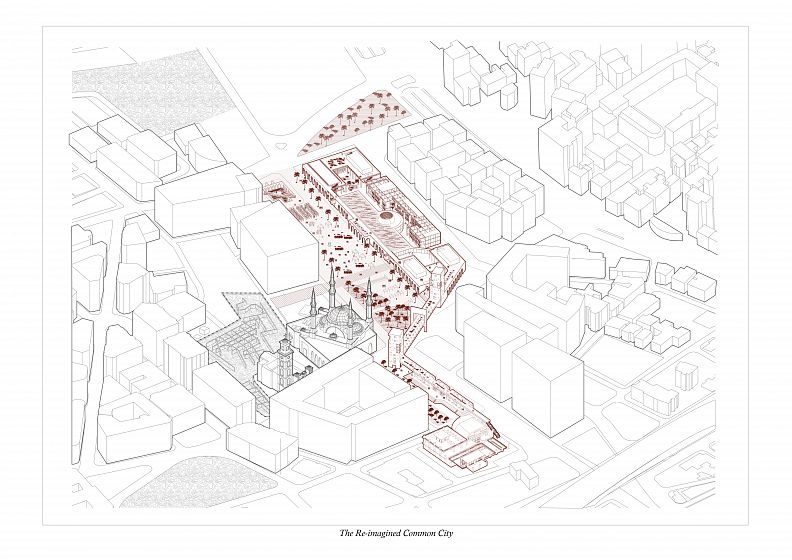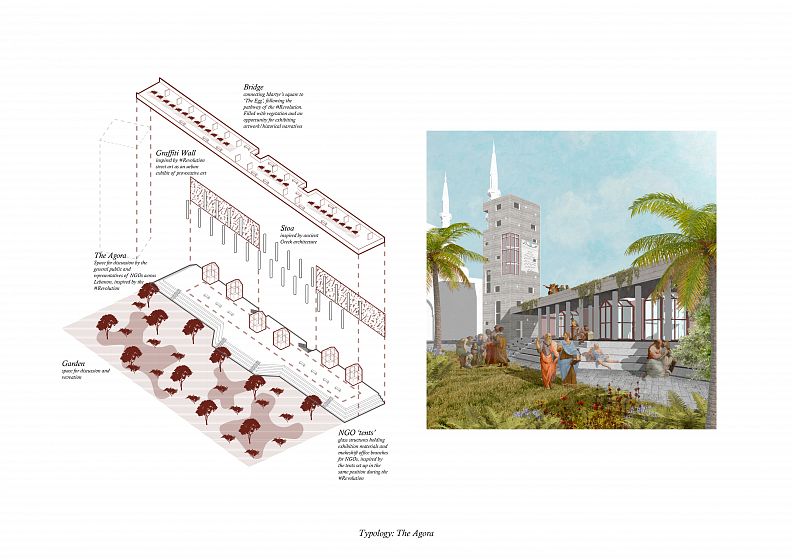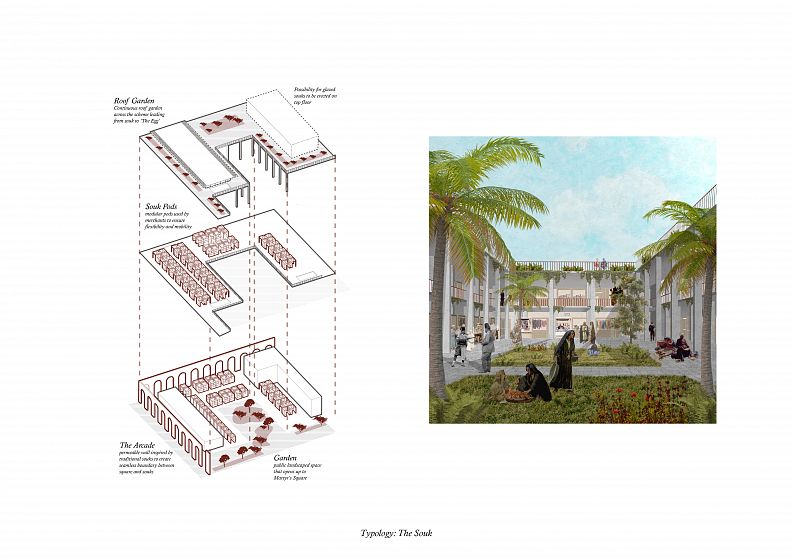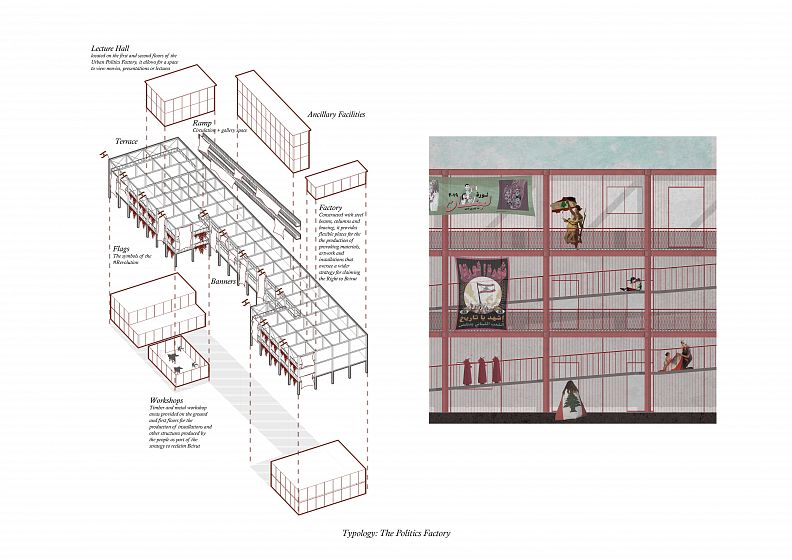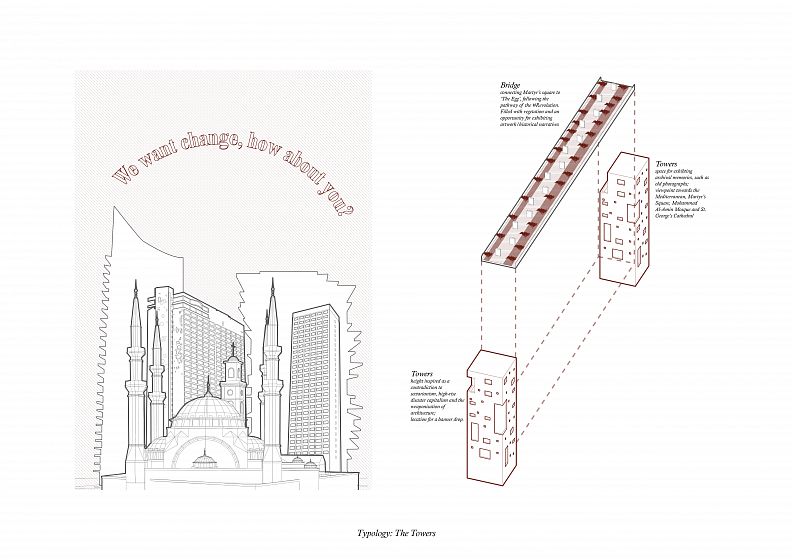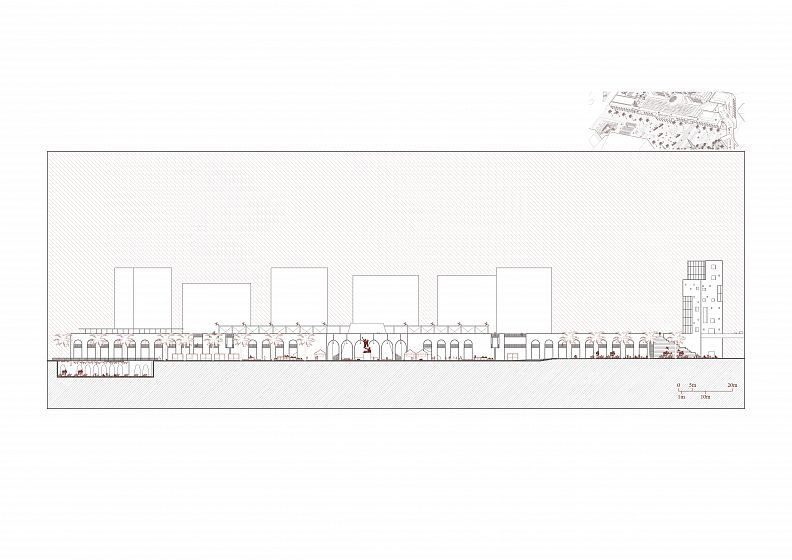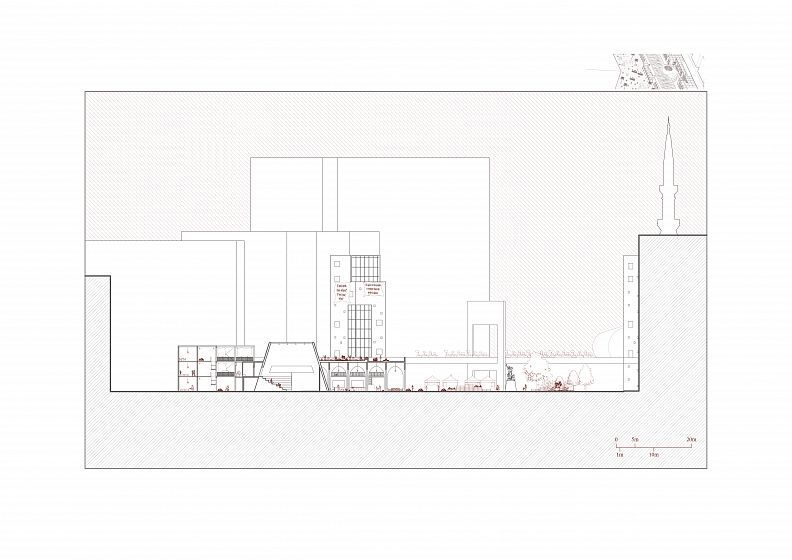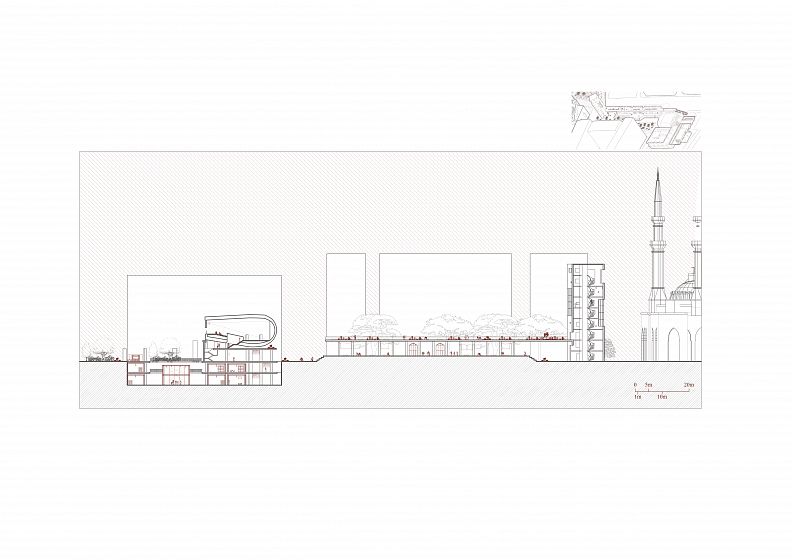Urban Revolution: Reinventing Beirut as a Common City

Project idea
The project investigates Beirut and the city’s controversy through the prism of history, war, and revolution. The research concludes that the city is in the state of a suspended present, as a result of political and economic instability. The project closely aligns with the dynamics of the Revolution that commenced in October 2019 and applies the tactical patterns of the citizens into the scheme.
The thesis recognises that following the Lebanese Civil War, Beirut has been divided into ethnic frontiers, but is void within the city centre, not providing a place for agonism and meeting the ‘Other’. It is noted that in order to avoid a future escalation of violence, the city centre must be activated and must attract Beirutis, in order to inspire discourse and synergy. The scheme is therefore located adjacent Martyrs Square and builds on the movement of the people during the protests, further occupying the war relic ‘The Egg’.
The scheme builds on the idea of creating a Common City, a form of utopian anarchy that is self-regulated and was briefly experienced during the revolution. The focus is on creating permanent structures that serve as a framework for tactical urbanism and the natural appropriation of spaces by humans. Beirut’s chaotic urban fabric is also referenced, through an approach that creates a framework, which provides a democratic space for the people. This is combined with a wider strategy that inspires Beirutis to claim their right to the city through reclaiming war relics and re-purposing them to serve their communities. Martyrs Square thus becomes the centre of this activity and an inherent demonstration of true politics.
Project description
The approach towards this scheme looks into a number of urban typologies that come together as a single journey. These typologies are inspired by various elements of the Beiruti vernacular, in combination with the interventions conceived during the revolution.
Some of the elements seek to be in balance with the current fabric through being extensions of the city. Others are intended as contradictions and as elements that challenge the visual stigma within Beirut. These typologies are weaved with one another to form connections and conversations with not only the adjacent Downtown area, but also the city in general. The typologies further reflect the missing functions from the city centre, and attempt to encourage a common ground and space for democracy and politics in a pure and social sense.
Technical information
The scheme is separated into solid elements that are permeable, such as the arches facing Martyrs Square, and tactical elements within that are assembled by the people. The arch is continuously used as an element throughout the design, as it creates a permeable boundary and shelter, whilst referencing vernacular Beiruti elements. The arches of the souk’s wall are built as a mixture of earth and cement, with much of the material reclaimed from destroyed buildings. The stalls within the souk are timber structures, which are easily assembled by the merchants. The Politics Factory, an urban typology within the design, is a lightweight steel structure envisioned as a space for workshops and the production of structures by the people using the scheme. This allows the scheme itself to become a factory for producing elements that can either be used within it, or used as installations that inhabit voids within the city.


